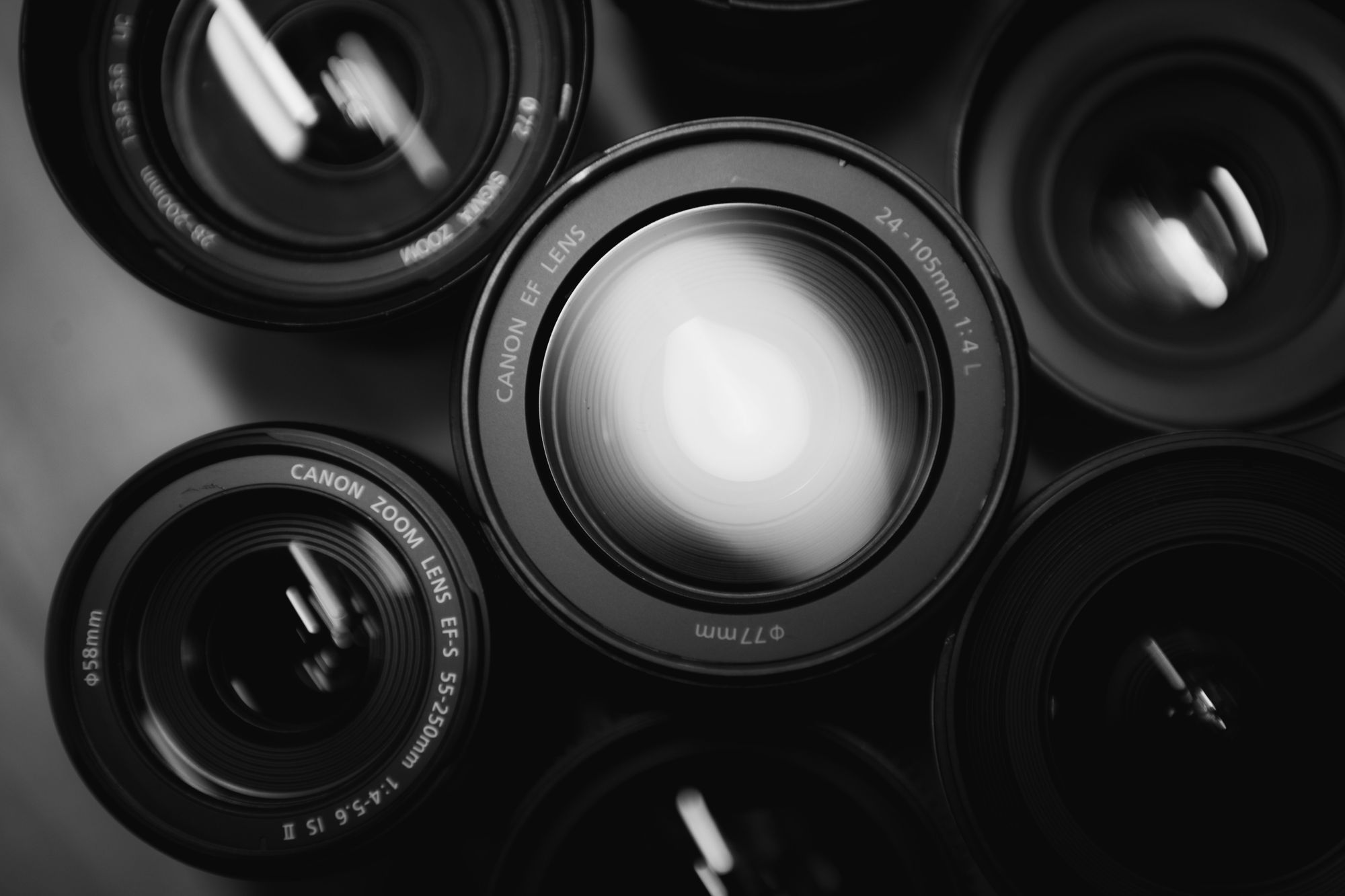A Comprehensive Guide to Choosing the Right Camera Lens

Choosing the right camera lens can make a huge difference in the quality of your photos. A good camera lens can help you capture stunning images with sharp details and vibrant colors. But with so many different types of lenses available, it can be overwhelming to choose the right one for your needs.

In this guide, we will walk you through the process of choosing the right camera lens step-by-step, so you can take your photography to the next level.
Table of Contents:
Understanding Lens Basics
Types of Camera Lenses
Prime vs. Zoom Lenses
Focal Length
Aperture
Image Stabilization
Compatibility
Lens Filters
Price
1.Understanding Lens Basics:
Before we dive into the details, it's important to understand the basics of camera lenses. A lens is essentially a piece of curved glass that focuses light onto your camera's sensor. This light is then converted into an image that you can see. Lenses come in different shapes and sizes and are designed for different purposes.
2.Types of Camera Lenses:
There are several types of camera lenses, including standard lenses, wide-angle lenses, telephoto lenses, and macro lenses. Standard lenses are the most common and are often used for everyday photography. Wide-angle lenses are great for landscape and architecture photography, while telephoto lenses are ideal for sports and wildlife photography. Macro lenses are designed for close-up photography and are perfect for capturing details in small objects.
3.Prime vs. Zoom Lenses:

When it comes to camera lenses, you have the option of choosing between prime and zoom lenses. Prime lenses have a fixed focal length, which means that you can't zoom in or out. Zoom lenses, on the other hand, allow you to adjust the focal length, which gives you more flexibility in your photography.
4.Focal Length:
The focal length is the distance between the lens and the camera's sensor. It determines the angle of view and magnification of the lens. A shorter focal length will give you a wider angle of view, while a longer focal length will give you a narrower angle of view. When choosing a lens, consider what you will be using it for and choose a focal length that is appropriate for your needs.
5.Aperture:

The aperture is the opening in the lens that allows light to pass through. It is measured in f-stops, with lower numbers indicating a larger aperture and higher numbers indicating a smaller aperture. A larger aperture will allow more light to pass through, which is great for low-light conditions. It also allows you to achieve a shallow depth of field, which can create a beautiful bokeh effect in your photos.
6.Image Stabilization:
Image stabilization is a feature that helps to reduce camera shake and blur in your photos. It can be especially useful when shooting in low-light conditions or when using a telephoto lens. There are two types of image stabilization: in-lens and in-body. In-lens stabilization is built into the lens, while in-body stabilization is built into the camera.
7.Compatibility:
When choosing a lens, it's important to ensure that it is compatible with your camera. Different camera brands have their own lens mounts, so you need to make sure that the lens you choose is compatible with your camera's mount. You should also consider the type of camera you have, as some lenses are designed specifically for mirrorless cameras.
8.Lens Filters:

Lens filters are accessories that attach to your lens to achieve different effects. They can be used to reduce glare, enhance colors, or protect your lens from scratches. When choosing a filter, make sure that it is compatible with your lens size.
9.Price:
Finally, consider the price when choosing a lens. Lenses can range from a few hundred dollars to several thousand dollars.
FAQs
Q1: What is the difference between a prime lens and a zoom lens?
A: A prime lens has a fixed focal length, meaning you can't zoom in or out, while a zoom lens allows you to adjust the focal length.
Q2: How do I know which focal length is right for my needs?
A: The focal length you need will depend on what you're photographing. Generally, shorter focal lengths are good for wide-angle shots, while longer focal lengths are better for zooming in on subjects.
Q3: Do I need an expensive lens to take good photos?
A: Not necessarily. While higher-end lenses can offer better image quality and more advanced features, there are plenty of good budget-friendly options that can produce great results.
Q4: What does the aperture of a lens refer to?
A: The aperture is the opening in the lens that allows light to enter. A wider aperture (lower f-stop number) lets in more light, which is useful for low-light photography and creating a shallow depth of field.
Q5: Should I prioritize image stabilization in a lens?
A: Image stabilization can be helpful in reducing camera shake and producing sharper photos, especially in low-light situations. However, it's not always necessary depending on your shooting needs.
Q6: Can I use a lens from one brand on a camera body from another brand?
A: In some cases, it's possible to use a lens from one brand on a camera body from another brand with the use of an adapter. However, not all combinations are compatible, so it's important to do your research first.
Q7: What are the benefits of a fast lens?
A: A fast lens, or one with a wide maximum aperture, can be useful for low-light situations and creating a shallow depth of field. They also tend to produce sharper images overall.
Q8: What is the difference between full-frame and crop-sensor lenses?
A: Full-frame lenses are designed to cover the larger image sensor of a full-frame camera, while crop-sensor lenses are designed for the smaller image sensor found in some entry-level DSLRs and mirrorless cameras.
Q9: How do I choose the right lens for macro photography?
A: Look for a lens with a close focusing distance and a high magnification ratio to capture small subjects in detail.
Q10: What are some factors to consider when choosing a lens for sports photography?
A: A fast maximum aperture, fast autofocus system, and long focal length can all be beneficial for capturing sports action shots.

